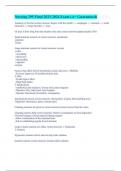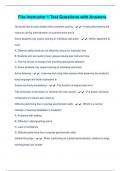Samenvatting
Summary Geography buiteNLand big test ch2 t-vwo3
buiteNLand vwo tto 3 chaper 2 §1-10 samenvatting/summary 1. An extinct species 2. Planet Earth 3. The face of the earth is changing 4. The earth’s diary 5. Species come and go 8. The Netherlands in flux 9. Minerals down deep 10. Dinosaurs, in the Netherlands?
[Meer zien]














